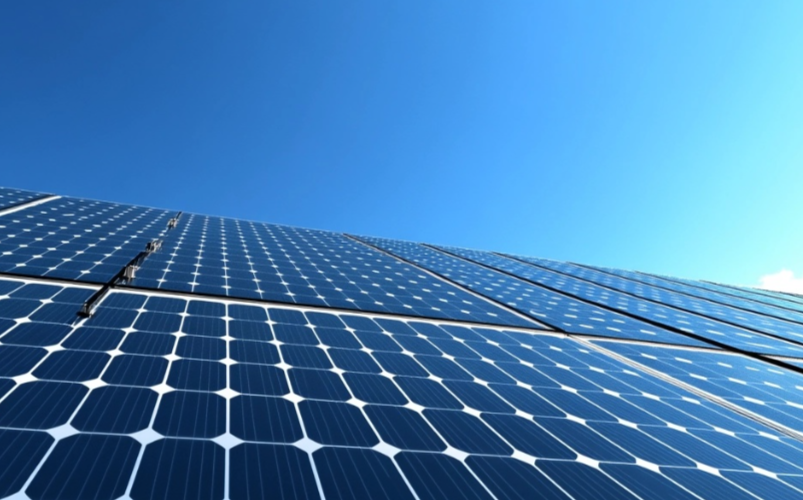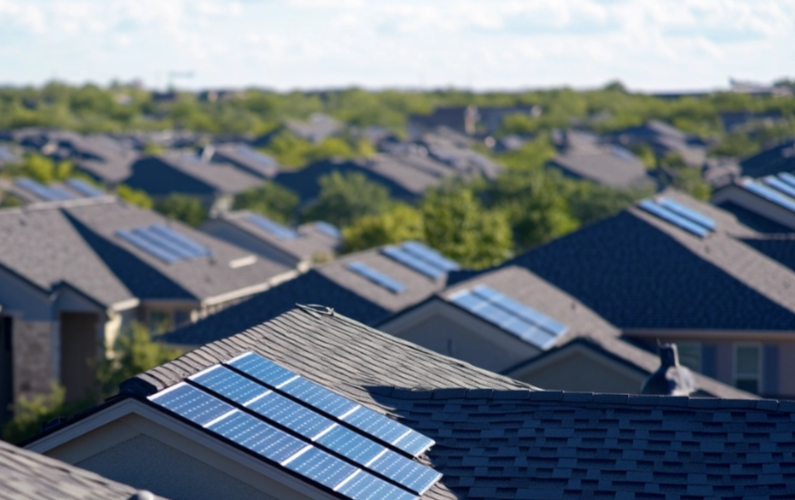
Solar flashing is essential for rooftop solar installations, ensuring that the areas where mounting hardware penetrates the roof remain watertight. During installation, small holes are often drilled to anchor the solar panels securely. Without proper flashing, these entry points become vulnerable to leaks, which is always bad news.
For instance, many homeowners discover, after a rainy season, that a simple installation oversight can result in moisture seepage that gradually damages both the roof structure and the solar investment. Solar flashing prevents these issues.
How Solar Flashing Works
Solar flashing functions as a barrier against water intrusion, crucial in protecting both your roof and solar panels from potential damage. When solar panels are installed, installers create small penetrations in the roofing material to attach mounting hardware securely to the roof’s structure. Solar flashing is strategically placed around these points, forming a tight seal that channels water away from the openings. This flashing works in tandem with the roof’s natural slope, allowing water to flow seamlessly over the panels and off the roof rather than pooling around the mountings.
The materials used for solar flashing—typically durable metals like aluminum or galvanized steel—are chosen for their resistance to corrosion and extreme weather, which are important in Texas, where roofs endure both high UV exposure and sudden heavy rains. Properly selected flashing material not only holds up under intense sun but also withstands the rapid expansion and contraction that can occur with temperature changes.
Types of Solar Flashing
Solar flashing comes in several types, each tailored for different installation needs and roof styles. The most common types include step flashing, counter-flashing, and Z-bar flashing, all designed to create tight, weatherproof seals around the solar mounting points.
1. Step Flashing: Step flashing is typically used when solar panels are installed on shingle roofs. Small pieces of flashing are layered in a “step” pattern along the roof slope, creating a layered seal that directs water safely away from vulnerable points. This technique is highly effective in areas with consistent rainfall, as the layered approach prevents water from pooling or penetrating.
2. Counter-Flashing: Counter-flashing is often applied alongside existing flashing to add an extra layer of protection. This type is especially valuable on roofs that experience high wind or heavy rain, common in Texas, as it reinforces the waterproofing barrier and reduces the risk of wind-driven rain seeping under the panels.
3. Z-Bar Flashing: Z-bar flashing is a single piece shaped like the letter “Z” and is often used around larger mounting areas. Its continuous design provides robust protection and is commonly used on metal and tile roofs where other flashing types may not adhere as effectively.
In Texas, where roofs can experience significant temperature fluctuations, selecting durable flashing materials that can expand and contract without compromising the seal is crucial for long-term effectiveness.
Preparation and Site Assessment
Before installing solar flashing, it’s essential to evaluate the roof’s condition and suitability for solar panels. A thorough assessment helps ensure that flashing and panels will be securely anchored without compromising the roof’s integrity.
- Inspect Roof Health and Structural Integrity: Start by inspecting the roof for any signs of damage, such as cracked or missing shingles, sagging areas, or existing leaks. Flashing is most effective when installed on a stable surface, so any weak spots should be repaired prior to installation. Older roofs may also require reinforcement or partial replacement if the material shows signs of extensive wear.
- Assess Roof Pitch and Drainage: Solar flashing works best when installed on roofs with adequate slope and drainage to channel water efficiently. Flat or low-slope roofs may require additional drainage solutions, as water can pool around solar mounts, increasing the risk of leaks even with flashing in place. Steeper roofs, while ideal for drainage, may require specific flashing types (such as step flashing) to accommodate the angle.
- Consider Roof Material and Panel Placement: Different roofing materials interact with flashing in unique ways. For instance, shingles allow for straightforward flashing placement, while materials like tile or metal may require specialized flashing types to maintain a tight seal. Additionally, evaluate the optimal placement for solar panels based on sun exposure, shading from nearby trees or structures, and accessibility for future maintenance.
- Weather Conditions and Flashing Material Selection: In Texas, where extreme temperatures and sudden storms are common, it’s important to choose flashing materials that can withstand expansion, contraction, and prolonged UV exposure. Aluminum and galvanized steel are popular choices for their durability, but some roofing situations may benefit from more specialized materials, like copper, for high durability against weather impacts.
- Plan for Cable Management: Solar panel installations involve wiring that runs from the panels to the inverter and into the home. During site preparation, plan the cable layout to minimize exposure to the elements and avoid interference with flashing. Proper cable management reduces the risk of water seepage along wiring paths, protecting both the roof and the solar system from electrical damage and leaks.
This groundwork is definitely a measure twice, cut once-type situation. It’s worth it though, as it contributes to a longer-lasting, effective installation that withstands both time and Texas’s tough weather conditions.
Why Solar Flashing Is Important for Texas Roofs

Intense sunlight, fluctuating temperatures, and sudden downpours are all regular staples we see here in Texas. Whether we’re in Denton, Austin, or San Antonio, these weather conditions can challenge the roofing materials on customer’s homes. High heat can cause expansion in roofing materials, while cooling at night leads to contraction. This constant movement can stress any penetrations or seals in the roof, making flashing crucial to maintain a watertight barrier around solar panel mounts.
In areas with frequent storms or high wind, such as parts of Texas, improper flashing can lead to severe water damage, not only compromising the roof but also risking electrical issues in the solar system itself. And the list goes on.
When flashing is correctly installed, it prevents wind-driven rain from entering around solar mounts, preserving both the structural integrity of the roof and the efficiency of the solar panels.
Properly installed solar flashing also makes future maintenance easier. With reliable flashing, any necessary adjustments or repairs to the panels can be made without disturbing the roof’s waterproofing, preserving the investment in both the solar panels and the roofing structure.





